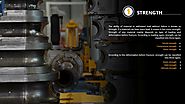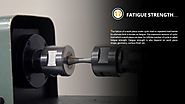-
About
- About Listly
- Community & Support
- Howto
- Chrome Extension
- Bookmarklet
- WordPress Plugin
- Listly Premium
- Privacy
- Terms
- DMCA Copyright
- © 2010-2025 Boomy Labs

 Ann M Wendt
Ann M Wendt
Listly by Ann M Wendt
Assignments4u.com is one of the pioneers in assignment help services. We understand the essential requirements of the students who study mechanical engineering. We try to guide them by completing their mechanical engineering assignment. It's going to assist them to get higher grades in planning mechanical engineering assignment help paperwork.If you need help with your mechanical engineering assignment, visit our website: http://www.assignments4u.com/mechanical-engineering-assignment-help/

The ability of the material to withstand load without failure is known as strength.

If a material has same properties throughout its geometry, known as homogeneous material and the property is known as homogeneity. It is an ideal situation but practically no material is homogeneous.

A material which has same elastic properties along its all loading direction known as isotropic material.

A material which exhibits different elastic properties in different loading direction known as an-isotropic material.

If a material regains its original dimension after removal of the load, it is known as elastic material and the property by virtue of which it regains its original shape is known as elasticity.

The ability of material to undergo some degree of permanent deformation without failure after removal of load is known as plasticity.

Ductility is a property by virtue of which metal can be drawn into wires. It can also define as a property which permits permanent deformation before fracture under tensile loading.

Brittleness is a property by virtue of which, a material will fail under loading without significant change in dimension. Glass and cast iron are well known brittle materials.

The ability of material to resist elastic deformation or deflection during loading, known as stiffness. A material which offers small change in dimension during loading is more stiffer. For example steel is stiffer than aluminum.

The property of a material to resist penetration is known as hardness. It is an ability to resist scratching, abrasion or cutting.

Toughness is defined as an ability to withstand with plastic or elastic deformation without failure. It is defined as the amount of energy absorbed before actual fracture.

A property by virtue of which a metal can flatten into thin sheets, known as malleability. It is also define as a property which permits plastic deformation under compression loading.

A property by virtue of which a material can be cut easily.

The ability of metal to dissipate the energy of vibration or cyclic stress is called damping. Cast iron has good damping property, that’s why most of machines body made by cast iron.

The slow and progressive change in dimension of a material under influence of its safe working stress for long time is known as creep.

The amount of energy absorb under elastic limit during loading is called resilience. The maximum amount of the energy absorb under elastic limit is called proof resilience.

The failure of a work piece under cyclic load or repeated load below its ultimate limit is known as fatigue.

The loss of ductility of a metal caused by physical or chemical changes, which make it brittle, is called embrittlement.
